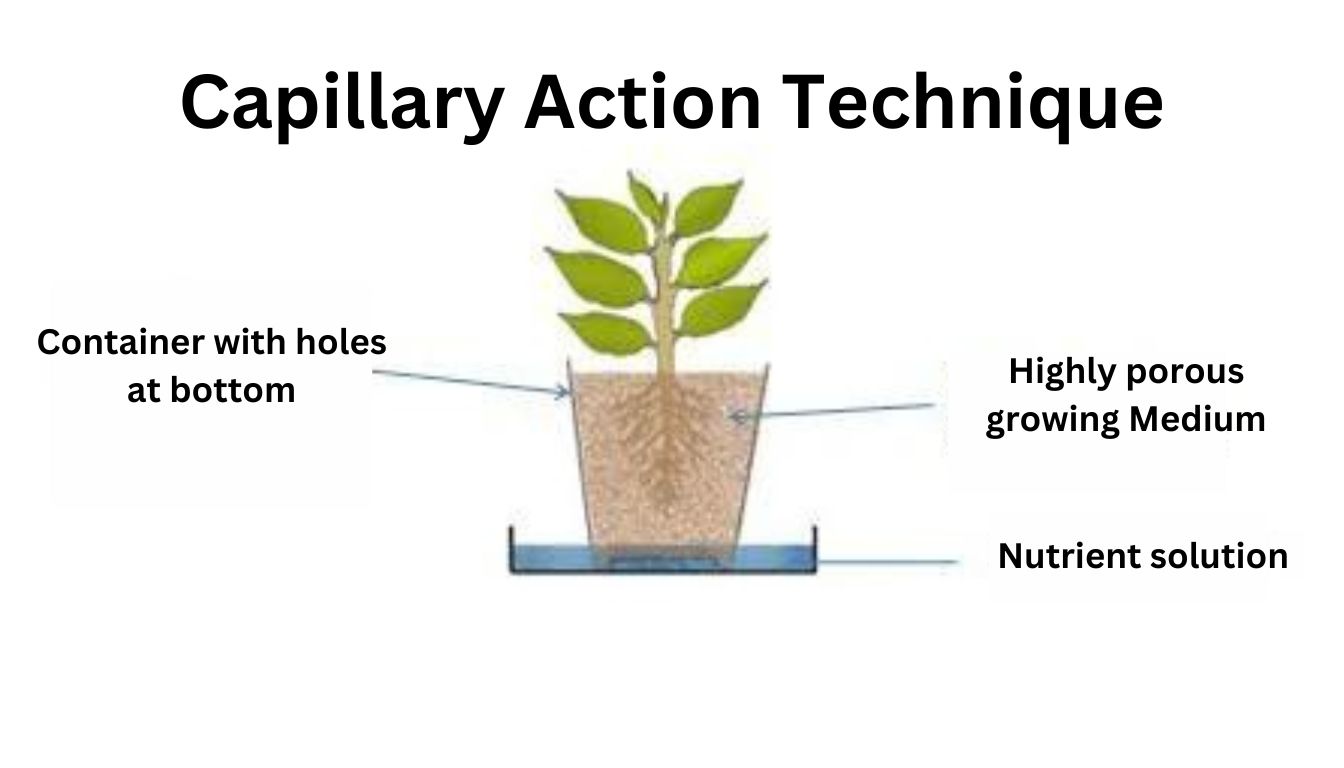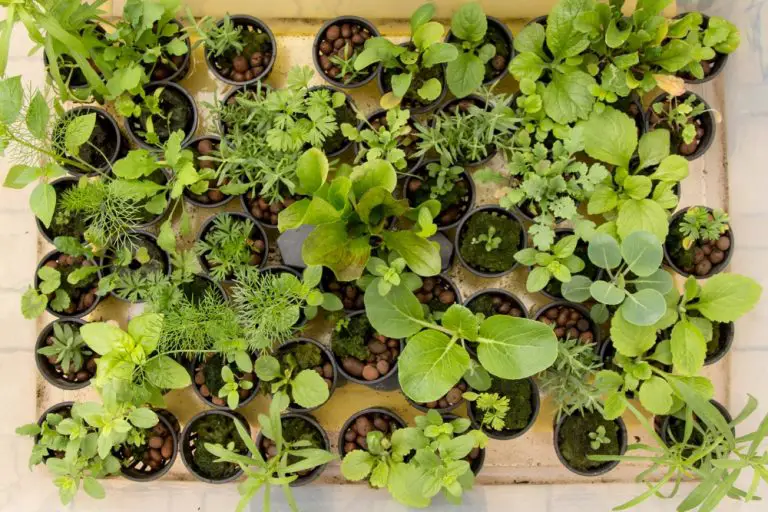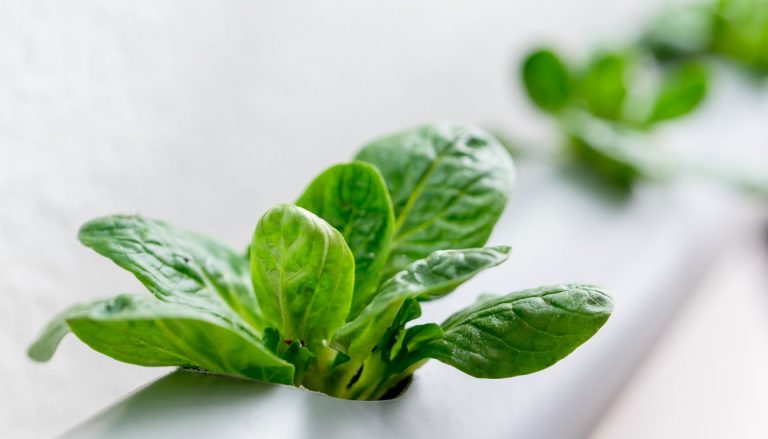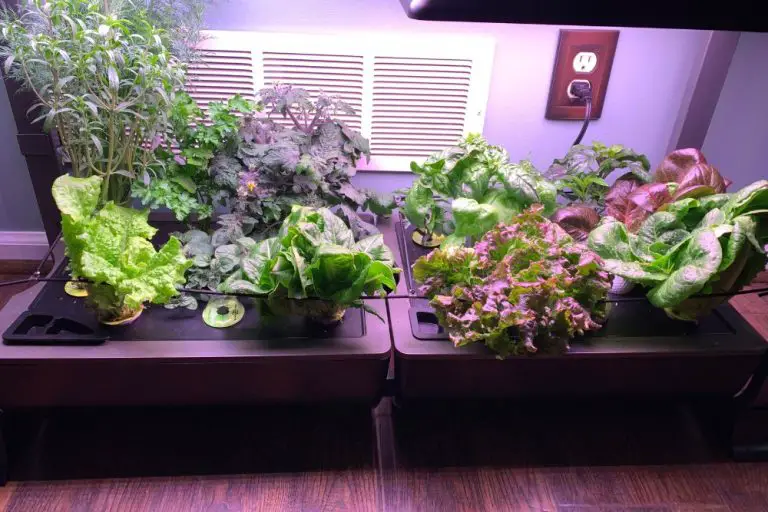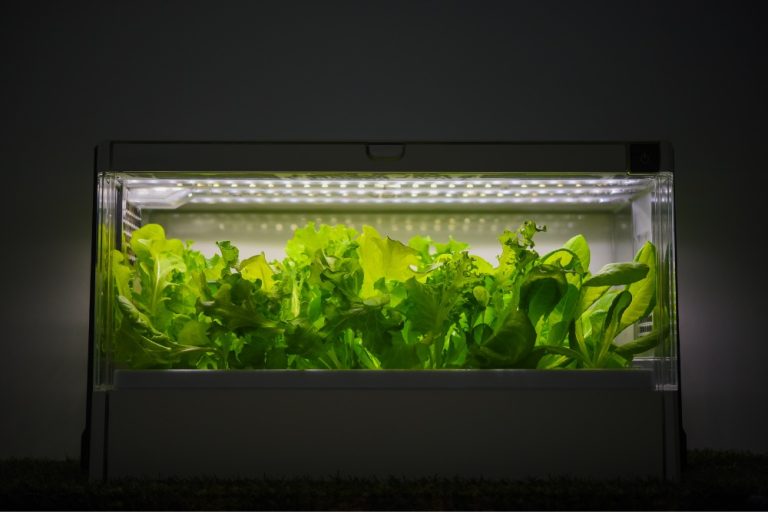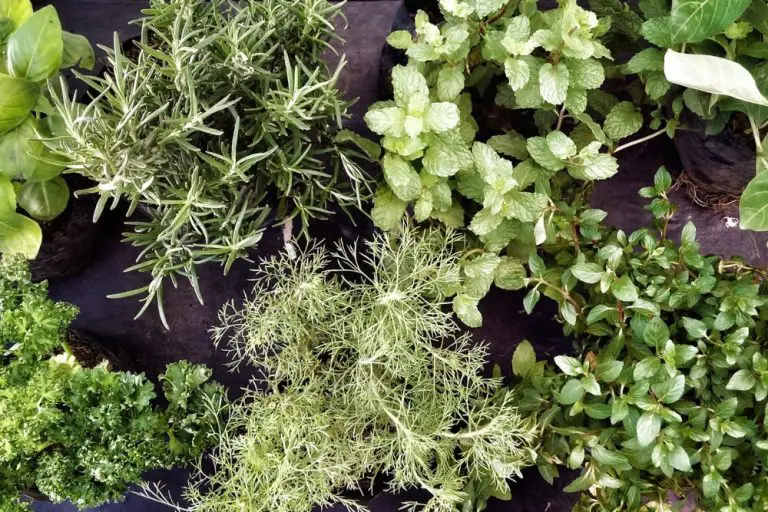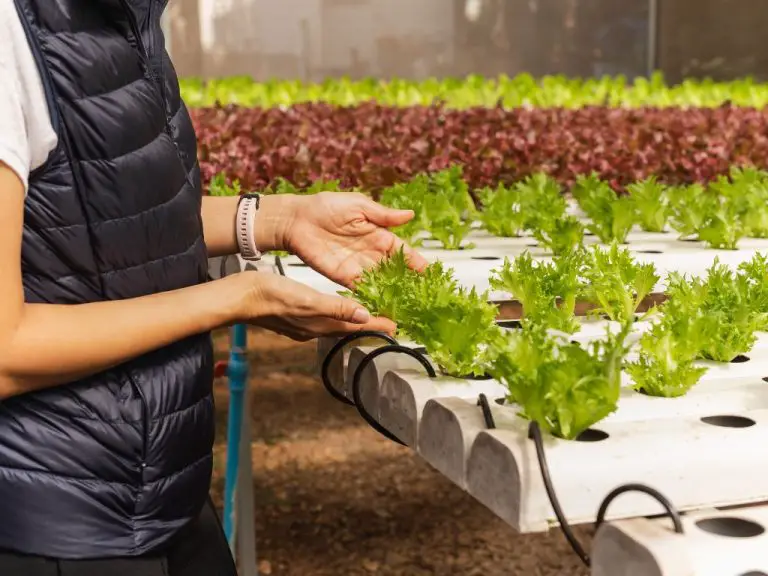Capillary Action Technique In Hydroponics
Welcome to our blog series on hydroponics, where we explore innovative techniques to help you unlock the full potential of your plants. In this first section, we’ll delve into the fascinating world of capillary action technique in hydroponics, a method that harnesses the power of nature to fuel plant growth without the need for pumps or electricity.
Hydroponics capillary action is all about delivering nutrients to plant roots through the natural process of capillary action. By setting up a wick system, growers can take advantage of this simple and cost-effective method, making it perfect for beginners. With the right setup, you can enjoy faster growth, higher yields, and better control over your growing environment.
So how does it work? In a wick system, you’ll need a growing container, a soilless medium, a wick material, a nutrient solution, and a pH testing kit. The wicks are threaded through holes in the growing container, with one end in the growing medium and the other submerged in the nutrient solution. Through capillary action, the nutrient solution is drawn up the wicks to nourish the plant’s roots, providing them with the essential nutrients they need for healthy growth.
Read – What is the Medium Used in Hydroponics
Setting Up a Wick System for Cannabis Cultivation
To harness the benefits of capillary action in hydroponics and optimize cannabis cultivation, setting up a wick system is a practical and effective method. With a few key components and careful attention to detail, growers can create an efficient hydroponic system using capillary action for nutrient delivery.
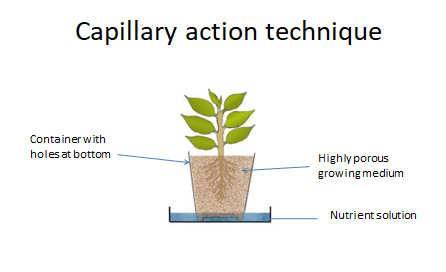
Choosing the Right Equipment
Start by selecting a suitable growing container, such as a plastic tub or bucket, that can accommodate the size and number of cannabis plants you plan to cultivate. A soilless medium, like coco coir, perlite, or vermiculite, should be used as the growing medium to provide optimal root development and water retention.
Next, choose a wick material that will facilitate the capillary action necessary for nutrient absorption. Cotton, nylon, or polypropylene ropes are commonly used wick options. These materials should be threaded through holes in the growing container, with one end positioned in the growing medium and the other submerged in the nutrient solution.
Mixing and Testing Nutrient Solution
When setting up a wick system, it is crucial to prepare a nutrient solution that is specifically formulated for cannabis cultivation. Follow the manufacturer’s instructions to mix the solution, ensuring it contains the necessary macro and micronutrients for healthy plant growth.
Before introducing the nutrient solution to the wick system, it’s essential to test and adjust the pH levels to ensure they fall within the optimal range for cannabis cultivation. Using a pH testing kit, monitor the pH of the nutrient solution regularly and make any necessary adjustments to maintain a stable and suitable environment for the plants.
Caring for Cannabis Plants in a Wick System
When using a wick system in hydroponics, it is important to provide proper care for your cannabis plants to ensure optimal growth and nutrient absorption. Regular monitoring and adjustment of the pH and nutrient levels in the nutrient solution are crucial for providing the right balance of nutrients to the plants. By regularly testing and maintaining the pH levels within the optimal range, you can ensure that the plants can absorb the nutrients effectively through capillary action.
In addition to pH and nutrient management, it is essential to replace the nutrient solution in the reservoir every two weeks. This prevents nutrient imbalances and salt buildup, which could hinder plant growth and lead to nutrient deficiencies or toxicities. By maintaining a clean growing environment and using organic pest control methods, you can prevent pest infestations and diseases from affecting your cannabis plants.
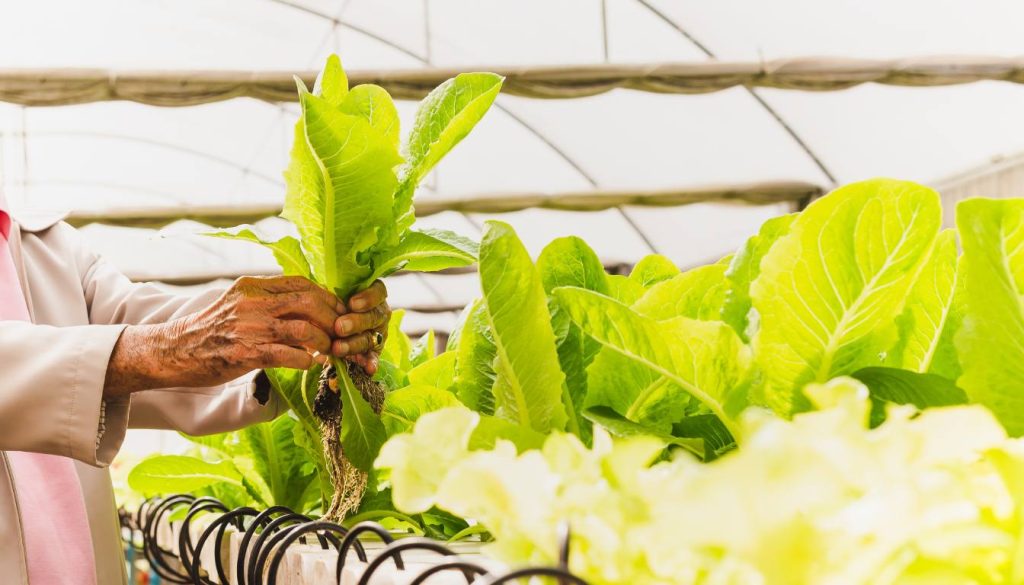
Proper air circulation and humidity control are also crucial factors in caring for cannabis plants in a wick system. Adequate air circulation helps prevent the development of mold and mildew while managing humidity levels ensures that the plants can thrive without being exposed to excessive moisture. Regular inspections and pruning techniques, such as topping and low-stress training (LST), can also help manage plant growth and ensure optimal light exposure for overall health and productivity.
How to Use Capillary Action in Hydroponics
Capillary action is a natural process that allows plants to absorb water and nutrients from the growing medium through a wick system. In hydroponics, this can be achieved by using a soilless medium, such as coco coir or perlite, and a wick material, such as cotton or nylon rope. The wick material absorbs the nutrient solution from the reservoir and delivers it to the plants via capillary action.
To set up a wick system, you must thread the wick material through holes in the growing container, with one end in the growing medium and the other submerged in the nutrient solution. The nutrient solution is then circulated through the wicks, ensuring that the plants receive the necessary nutrients for growth and development. By utilizing capillary action in hydroponics, you can provide a consistent supply of nutrients to your cannabis plants without the need for pumps or electricity.
By following these care tips and utilizing capillary action in your hydroponic wick system, you can ensure the health and productivity of your cannabis plants. Proper pH and nutrient management, regular maintenance, and attention to environmental factors will help you achieve optimal results and maximize the benefits of using a wick system for cannabis cultivation.
Advantages of the Wick System
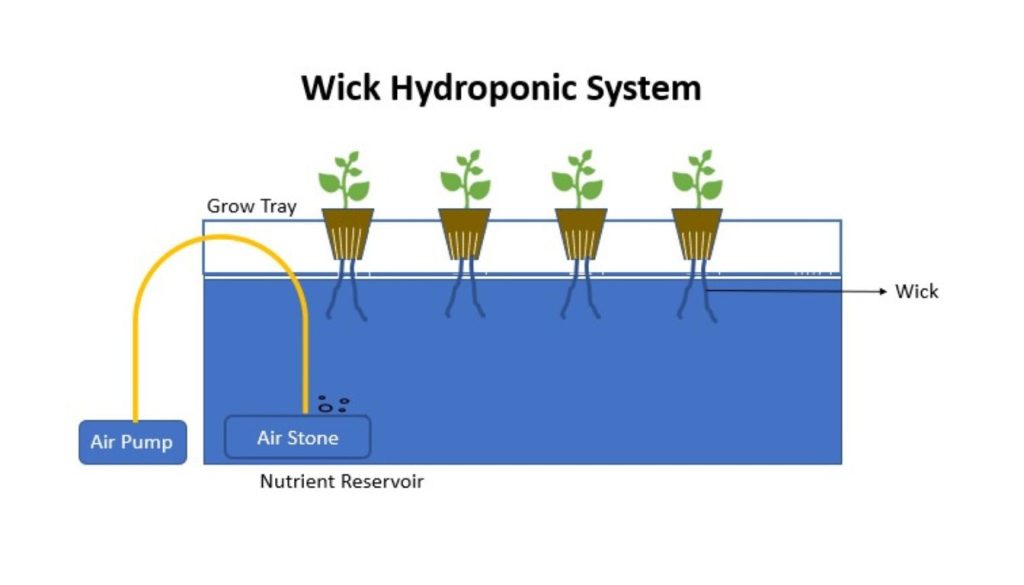
The wick system in hydroponics offers several advantages that make it a popular choice for cannabis cultivation. One of the main benefits is its simplicity and cost-effectiveness. Unlike other hydroponic systems that require pumps and electricity, the wick system operates using the natural process of capillary action. This means that growers can get started with minimal equipment and investment, making it an ideal option for beginners or those on a budget.
Another advantage of the wick system is its energy efficiency. Since it doesn’t rely on electricity or complex infrastructure, it consumes significantly less energy compared to other hydroponic methods. This not only helps reduce costs but also makes it a more sustainable option for growers.
Read – Wick Hydroponic System Advantages and Disadvantages
Improved Growth Control and Nutrient Distribution
The wick system allows for better control over nutrient distribution and plant growth. With the use of wicks, the nutrient solution is delivered directly to the plant roots, ensuring they receive a consistent supply of nutrients. This helps promote faster growth, higher yields, and healthier plants.
Additionally, the wick system provides a passive nutrient delivery method, allowing growers to have more control over the timing and amount of nutrients provided to the plants. This can be especially beneficial for cannabis cultivation, where precise nutrient management is crucial for achieving desired results.
Overall, the wick system offers a simple, cost-effective, and energy-efficient solution for cannabis cultivation. While it may have slightly slower growth rates compared to other hydroponic systems, its benefits, such as improved growth control and nutrient distribution, make it a valuable option for small-scale growers.
The Future of Hydroponics
Hydroponics, with its innovative techniques and sustainable practices, holds the key to revolutionizing farming and food production. Among these techniques, the capillary action method stands out as a game-changer in the world of hydroponics. By harnessing the power of capillary action, hydroponic systems can deliver nutrients efficiently to plant roots.
The capillary action technique in hydroponics, alongside other methods, offers a range of benefits that contribute to a greener future. This technique allows growers to overcome space limitations and grow crops in urban environments. By maximizing resource efficiency and reducing water usage, hydroponics proves to be an environmentally friendly option.
As technology continues to advance, hydroponics will play an even more significant role in sustainable agriculture. Developments in plant nutrition and growth will further enhance the efficiency and productivity of hydroponic systems. The hydroponic capillary action method is poised to shape the future of food security by ensuring consistent and abundant yields, regardless of weather conditions.
Read – 27 Hydroponics Advantages and Disadvantages
FAQ
What is the capillary action technique in hydroponics?
The capillary action technique in hydroponics is a method that uses the natural process of capillary action to deliver nutrients to plant roots.
Is the capillary action technique suitable for beginners?
Yes, the capillary action technique is simple and cost-effective, making it ideal for beginners in hydroponics.
What equipment do I need to set up a wick system for cannabis cultivation?
To set up a wick system, you will need a suitable growing container, a soilless medium, a wick material, a nutrient solution, and a pH testing kit.
How do I set up a wick system for cannabis cultivation?
The wick is threaded through holes in the growing container, with one end in the growing medium and the other submerged in the nutrient solution. The container is filled with the growing medium, and the nutrient solution is added to the reservoir.
How often should I monitor and adjust the pH and nutrient levels in a wick system?
It is important to regularly monitor and adjust the pH and nutrient levels of the nutrient solution in a wick system to ensure optimal plant growth.
Do I need to replace the nutrient solution in a wick system?
Yes, it is recommended to replace the nutrient solution every two weeks to prevent nutrient imbalances and salt buildup.
What pruning and training techniques should I use in a wick system?
Pruning and training techniques, such as topping, low-stress training (LST), and the Screen of Green (SCROG) method, can help manage plant growth and ensure optimal light exposure in a wick system.
How can I prevent pests and diseases in a wick system?
Regular inspections, maintaining a clean growing environment, and using organic pest control methods can help prevent pests and diseases in a wick system.
What are the advantages of using a wick system?
The wick system is simple, cost-effective, and energy-efficient. It is easy to set up and maintain, requiring minimal equipment and investment compared to other hydroponic systems.
Is the wick system suitable for large-scale cultivation?
The wick system is best suited for small-scale cultivation, as managing nutrient distribution and plant growth may become challenging in larger setups.
What does the future hold for hydroponics and the capillary action technique?
Hydroponics, including the capillary action technique, has the potential to revolutionize farming and food production. As technology advances and our understanding of plant nutrition improves, hydroponics will continue to play a significant role in sustainable agriculture and food security.
- 15 Ingenious Kitchen Garden Ideas to Cultivate Freshness Right at Home - April 7, 2024
- 10 Top Picks Best Plants for Open Terrarium - April 2, 2024
- 21 Easy and Cheap Walkway Ideas for a Charming Garden - March 31, 2024

